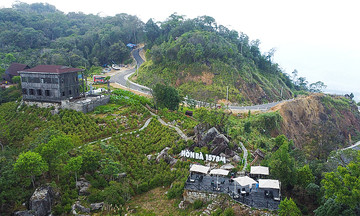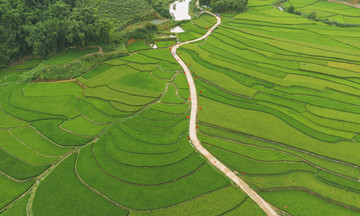Alex Robinson, a journalist from the renowned British travel magazine Wanderlust, embarked on a north-south journey aboard the Reunification Express in the summer of 2025. He shared his impressions of the trip on 10/7.
Traveling on the Reunification Express in 2025 held special significance, marking the 50th anniversary of the liberation of Saigon (now Ho Chi Minh City). The journey begins in Hanoi, the capital in the north, with its ancient streets and temples, and ends amidst the skyscrapers of Ho Chi Minh City in the south.
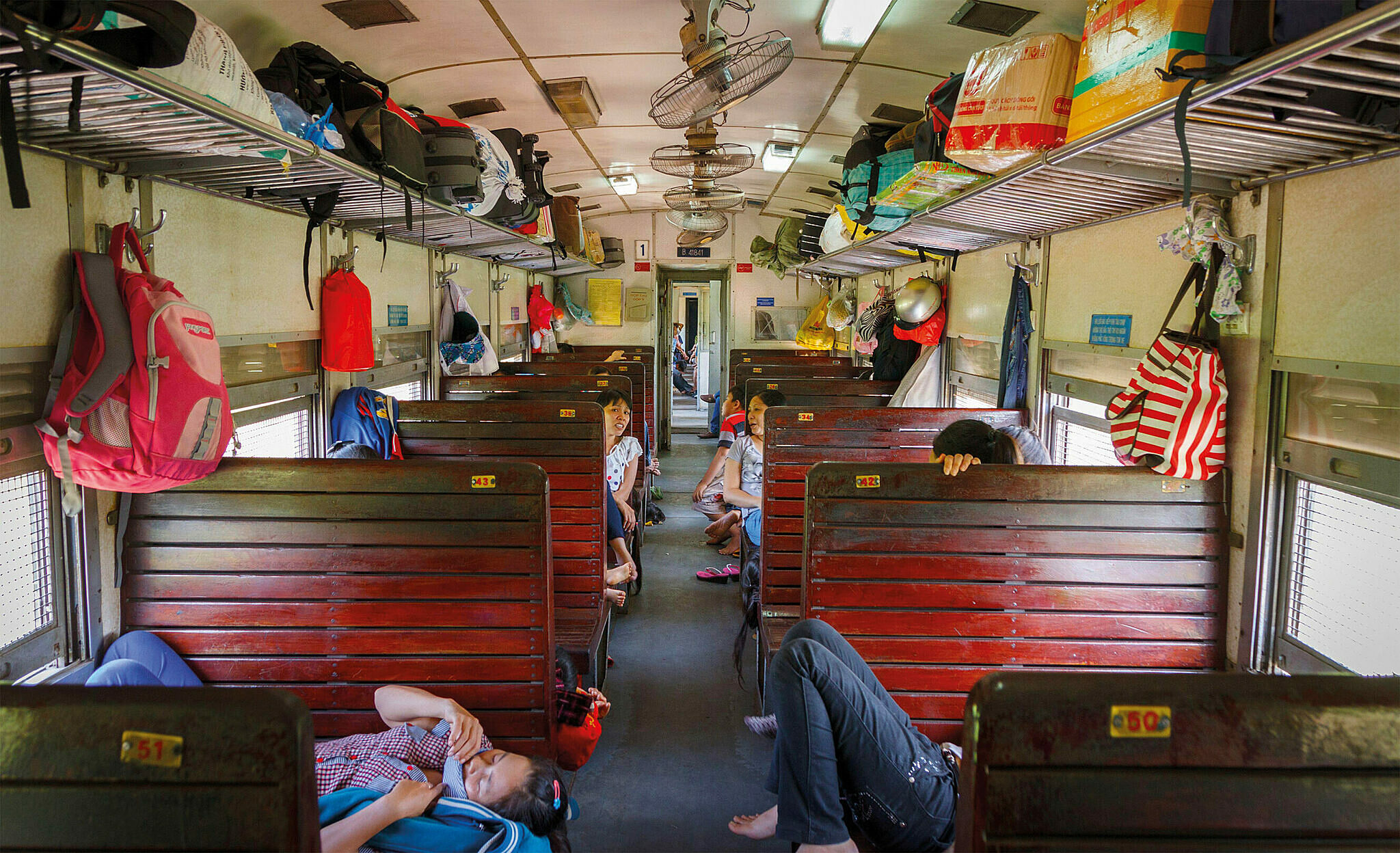 |
A carriage on the north-south train. Photo: Alamy |
A carriage on the north-south train. Photo: Alamy
While it's possible to complete the entire north-south journey in a little over 30 hours, the true enjoyment lies in taking one’s time. Stop at notable locations along the way, savoring the scenic beauty of Vietnam. Mountain ranges draped in lush forests, turquoise bays, islands, and immense caves all contribute to the Reunification Express's status as one of the world's most iconic train journeys.
However, the Reunification Express isn't quite as "express" as its name implies. The trains are typically simple diesel engines with basic air-conditioned compartments. The real joy comes from the journey itself, as you gently sway away from the city outskirts and provincial stations, meandering through the countryside, past vast rice paddies. You'll see locals cycling along rural roads and bustling fishing ports teeming with activity.
All eight of Vietnam's World Heritage sites are accessible from stops along the route. After Hanoi, Ninh Binh is a recommended stop. An overnight stay provides ample time to witness the golden rice paddies alongside the winding river in Tam Coc.
From Tam Coc, head to Dong Hoi to explore the caves of Phong Nha. Some caves are illuminated with wooden walkways, while others offer adventurous forays into darkness or boat trips beneath stalactites. Son Doong Cave is so vast that it requires several days to explore.
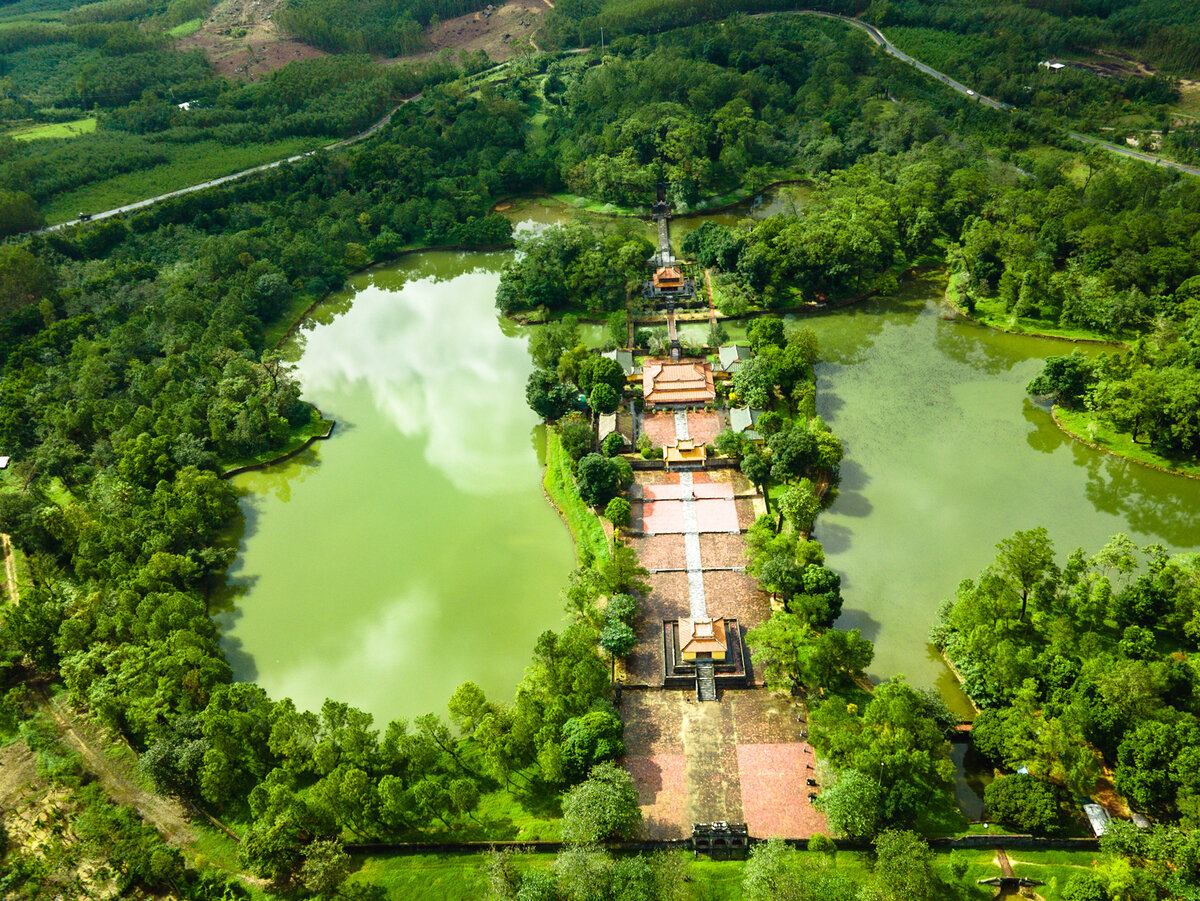 |
Hue's Minh Mang Tomb from above. Photo: Quy Coc Tu |
Hue's Minh Mang Tomb from above. Photo: Quy Coc Tu
Hue, the former imperial capital of the Nguyen Dynasty, boasts the grand Imperial Citadel on the banks of the Perfume River. This historical landmark contrasts with modern Hue and is surrounded by a countryside dotted with tombs, temples, and pagodas.
Further south, you can stop in coastal Da Nang or stay in a boutique hotel in Hoi An. This ancient town retains its charm with the Japanese Covered Bridge and small pagodas. From Hoi An, if time allows, visit the Cham Islands to observe fishermen in their traditional round boats. You can also cycle through rice paddies or explore the My Son Sanctuary (Vietnam's Angkor). Here, 1,500-year-old temples nestle in the jungle, punctuated by B-52 bomb craters.
While Hanoi exudes ancient charm, Ho Chi Minh City is decidedly modern. The city is awash in the glow of skyscrapers and neon signs. Interspersed with this modernity are ancient Chinatown markets and French-style boulevards, an opera house, and fashionable shops. Alleys abound, hiding unique bars and street food stalls where friends gather after work to enjoy bowls of pho at plastic tables. Don't miss a tour of the War Remnants Museum and the Cu Chi Tunnels, an underground town hidden beneath the earth.
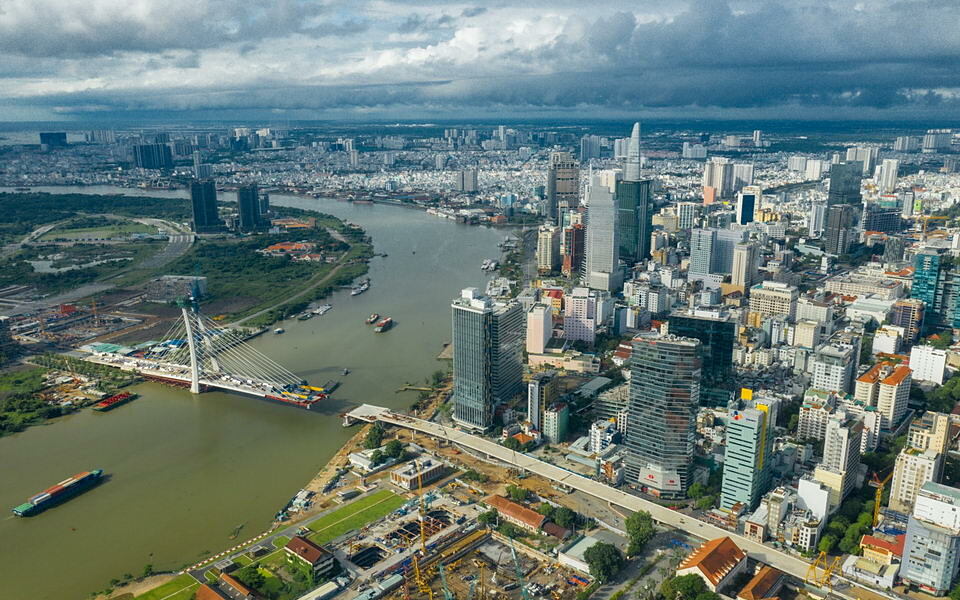 |
Modern Ho Chi Minh City. Photo: Quy Coc Tu |
Modern Ho Chi Minh City. Photo: Quy Coc Tu
The Reunification Express, managed by Vietnam Railways, has clearly displayed fares and schedules in English. Opt for first class for a comfortable berth with bedding, clean linens, and meals, priced at 75 GBP (approximately 2.5 million VND) from Hanoi to Ho Chi Minh City. Travelers can also opt for a partial journey and connect to other domestic or Southeast Asian destinations by air.
Tam Anh (from Wanderlust)



